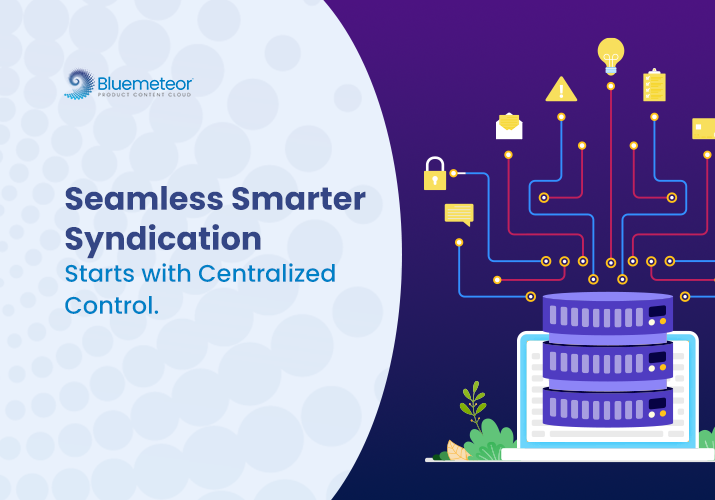Omnichannel Product Management: The Game Plan for Maximum Sales Impact

Struggling to sync inventory and data across channels? Are potential sales slipping away because your systems aren’t aligned? As your sales channels grow, so do the challenges. In this blog post, we’ll explore modern solutions to streamline your operations, including omnichannel product management strategies, sales channel integration, and unified commerce.
The Challenge? Scaling without losing control. With customers expecting a seamless experience across all touchpoints—from in-store to mobile, to social media—any misstep can lead to lost sales or frustrated buyers.
The solution? A well-executed omnichannel product management strategy.
Let’s break down how businesses like yours can maximize sales impact while optimizing the customer experience across all touchpoints.
The Power of Omnichannel Product Management
Omnichannel retail isn’t just about being present everywhere—it’s about being consistent everywhere.
These days, customers expect to seamlessly move between shopping in-store, browsing on their phone, and ordering online—all while having the same great experience. Businesses that can’t keep up? They’re going to lose out to competitors who can.
So, how do you make sure your products are always in stock, always accurate, and always ready for your customer, no matter where they are? That’s where Omnichannel Product Management comes in.
By syncing your product data, inventory, and sales strategy across every touchpoint, you not only create a seamless shopping experience but also maximize your chances for sales at every turn.
But most of the time, many businesses like yours face these common struggles:
- Your sales channels aren’t in sync, and it’s creating a chaotic customer experience.
- Keeping track of inventory across multiple platforms feels like a never-ending headache.
- Your product data is inconsistent across eCommerce, in-store, and third-party marketplaces, making you look unreliable.
With the right strategy, you’ll be able to unify your sales channels, optimize inventory, and ensure your product data is flawless across the board
Challenges in Omnichannel Product Management
Before diving into the game plan, let’s take a quick look at what most businesses struggle with when they try to manage product information across multiple platforms:
- Inconsistent Product Information: Your product descriptions are polished on your eCommerce site but somehow get lost in translation on a third-party marketplace.
- Inventory Nightmares: Running out of stock on one channel while sitting on excess inventory in another? Yep, that’s an omnichannel headache.
- Customer Experience Gaps: The last thing you want is for a customer to abandon their cart because shipping details differ depending on where they shop.
So, what’s the solution?
A seamless Omnichannel Product Management Strategy that brings everything together under one unified commerce ecosystem.
Maximizing Sales with Omnichannel Product Management Key Strategies
To truly drive sales and stand out, you need smart strategies that align with modern customer behaviors and preferences, all while ensuring your eCommerce product management system is seamlessly integrated and up to date.
Whether you’re optimizing your sales channels, enhancing customer experiences, or unifying your commerce operations, these key strategies can help unlock maximum sales potential.
Omnichannel Retail Strategy: Aligning Every Channel for Success
An effective omnichannel strategy ensures that all aspects of your channel sales optimization are aligned. This means your product data—from pricing to descriptions—remains consistent across all platforms, whether on your website or your social media store.
Also, it’s not just about pushing the same message; it’s about tailoring it to fit each channel’s unique vibe while keeping the core message consistent.
When customers start their journey online or in-store, the experience should feel like a smooth path.
Here are some key strategies to help you achieve that:
- Centralize Your Product Information: Use a single source of truth for your product data. This ensures everyone—both your team and your customers—has access to the most accurate and up-to-date information.
- Customize Messaging for Each Channel: While maintaining a consistent brand voice, tweak your messaging to resonate with the audience on each channel. What works on Instagram might not translate to your website, and that’s okay!
- Integrate Sales Platforms: Connect your online and offline sales platforms to provide real-time inventory updates. This helps prevent overselling and ensures your customers know exactly what’s available.
- Enhance Customer Experience: Use customer data to personalize interactions. Recommendations based on past purchases can create a more engaging shopping experience, whether in-store or online.
- Monitor and Adapt: Continuously analyze channel performance and customer feedback. Be willing to adapt your strategy based on what’s working and what’s not.
Sales Channel Integration:
Imagine if your eCommerce platform could talk to your brick-and-mortar POS system—and your third-party seller channels, too. Sounds like a dream, right?
But this kind of sales channel integration is not only possible; it’s essential for modern businesses.
When you integrate sales channels, you eliminate the need for manual updates, meaning no more juggling spreadsheets to keep inventory and pricing accurate.
You get real-time updates, reduce errors, and ensure your product data flows seamlessly across all platforms.
So, how can you make it happen?
- Choose a Unified System: Start by selecting a platform that can sync your eCommerce, in-store, and third-party channels. It’ll allow you to manage everything from one dashboard and keep your data consistent.
- Automate Inventory Management: Automating stock levels across all channels ensures that inventory is always up to date, preventing overselling or stockouts.
- Integrate Customer Data: Track customer behavior across channels to offer personalized experiences and targeted promotions, enhancing loyalty and boosting sales.
It’s how you take control while scaling your business, creating a smooth and efficient operation that works for you, not against you.
Unified Commerce: Bringing it All Together
At the heart of an effective omnichannel strategy is customer experience optimization. Customers don’t see individual channels—they see one cohesive brand and expect a seamless experience across the board.
90% of the time, consumers switch between various online channels. By “bringing it all together,” we mean consolidating all essential elements of your business—order processing, inventory management, and customer data—into one central platform i.e. by using the Product Information Management (PIM)system.
Instead of managing each channel separately, everything is connected, creating a single source of truth for your operations.
PIM guarantees that no matter where customers interact with your brand, they’ll enjoy a consistent experience—from accurate product info to reliable shipping.
Why does this matter? Because it ensures consistency. PIM goes beyond syncing systems; it elevates the entire customer experience.
To Sum It Up!
Juggling omnichannel inventory management, eCommerce platforms, brick-and-mortar stores, and third-party sellers while keeping product data and inventory in sync can feel overwhelming overtime. But success isn’t about adding more channels; it’s about managing them intelligently.
This is where a robust PIM (Product Information Management) system steps in. A PIM system:
- Ensures accurate product data
- Streamlines operations
- Delivers a smooth, unified experience
It’s not just about staying organized; it’s about driving meaningful results.
Ready to boost sales and simplify your omnichannel strategy?
Let’s Achieve Success Together with Bluemeteor Product Content Cloud
At Bluemeteor, we understand the challenges you face in omnichannel product management. Our Product Content Cloud simplifies your process, ensuring accurate and consistent product information across all channels.
Imagine optimizing your inventory and unifying your sales channels while delivering an exceptional customer experience. That’s what we’re here for!
How about we give you a DEMO?
Let us show you how our Product Content Cloud platform streamlines your product management. Let’s explore the possibilities together.




